Jenever is to the Netherlands what vodka is to Poland or whisky is to Scotland. And that means – whether you’re drinking it straight up or as part of a cocktail – it’s a must-try when visiting Amsterdam.
Pronounced ye-NAY-ver in Dutch (or “geneva” in English), jenever is the quintessential Dutch spirit – so much so that it’s often referred to as “Holland gin.” But don’t let that fool you: jenever is in fact the precursor to English gin – so we have a lot to thank this plucky, juniper-spiced Dutch spirit for!
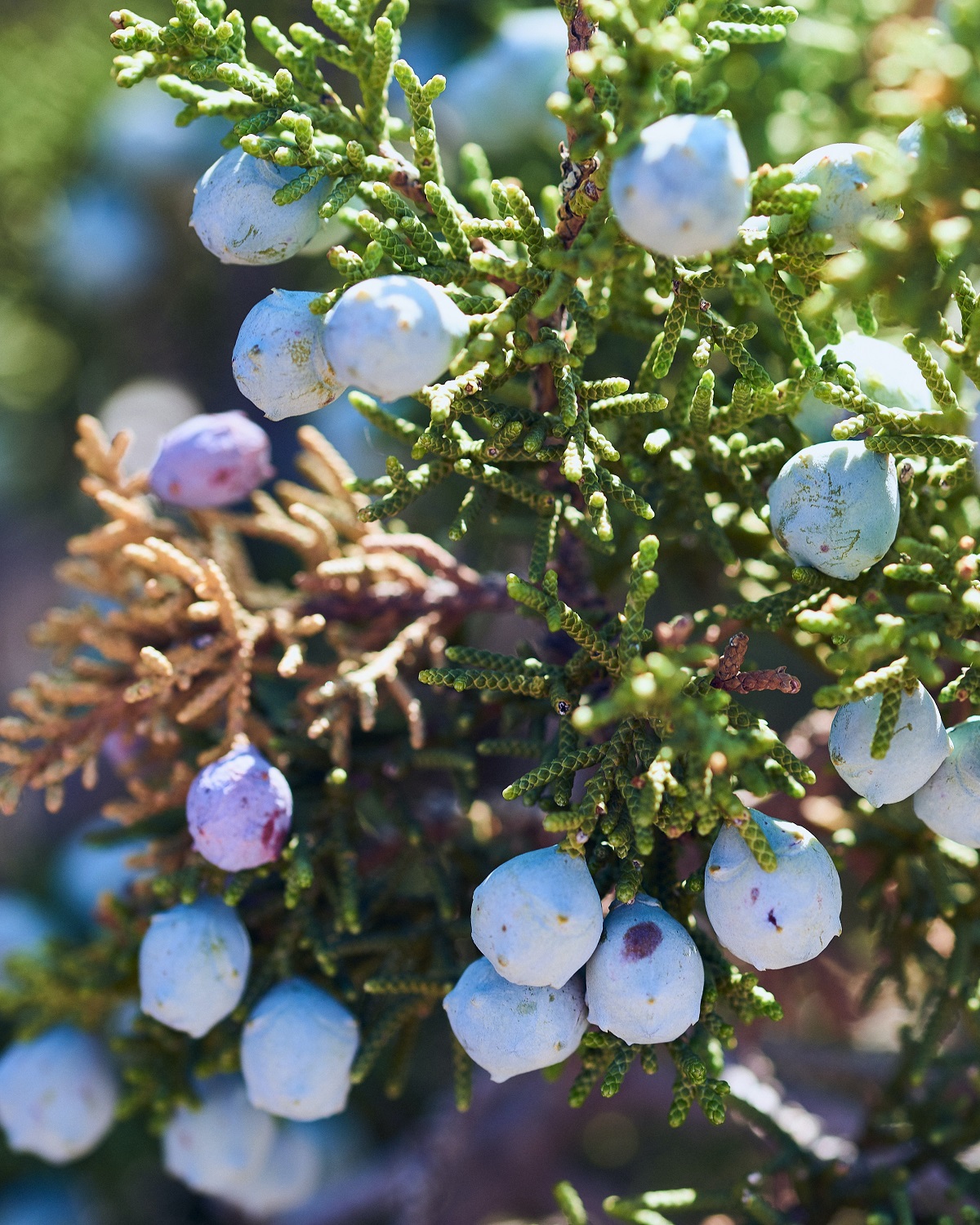
A short history of Dutch jenever
From pharmacies to bars
Jenever’s fascinating origins date back to the Middle Ages, when distilling malt wine and adding juniper berries created a medicinal tonic sold by pharmacists to treat a wide range of ailments. But it wasn’t until the Dutch Golden Age in the 17th century that jenever became popular as an alcoholic drink among the Dutch, Belgians, and neighbors in northern France and Germany. Legend has it that English soldiers and sailors began importing jenever to England during Dutch King William Of Orange’s invasion of England in the 1688 – which likely led to the creation of London Dry Gin.
Protected status and cultural heritage
By the late 1900s, tastes and distillation methods had changed, which meant that an entirely new style of jenever was developed. Today, you can still drink both styles of jenever – the old style known as oude (old) jenever and the new style known as jonge (young) jenever. In 2008, the European Commission ruled that the name “jenever” on a product had a protected status of origin – labelled PGI (Protected Geographical Indication). The cultural heritage could so clearly be traced to the product’s origin in the Netherlands and Belgium that it was awarded its own protected status, which was a huge moment of pride for the Low Countries.
What’s in a name? Young vs old
So we’ve established that, unlike gin, jenever comes in two distinctly different styles. But what’s in them, how are they made, and what do they taste like? Let’s break it down.
Oude jenever
The original style of jenever was produced by distilling malt wine to 50% alcohol by volume and adding juniper to make it more palatable. Nowadays, oude jenever must contain between 15% and 50% malt spirit and no more than 20 grams of sugar per liter. It’s often aged in wooden barrels, which give it an oaky, smoky, malty flavor that resembles whisky. It’s also a light caramel color, which is a dead giveaway in a blind taste test.
Jonge jenever
in contrast, jonge jenever must contain no more than 15% malt wine (the rest is a neutral spirit), no more than 10 grams of sugar per liter, and is typically consumed young and fresh. The result is a colorless spirit that’s less smooth and less sweet than oude jenever. In fact, the flavor is much closer to vodka or dry gin.
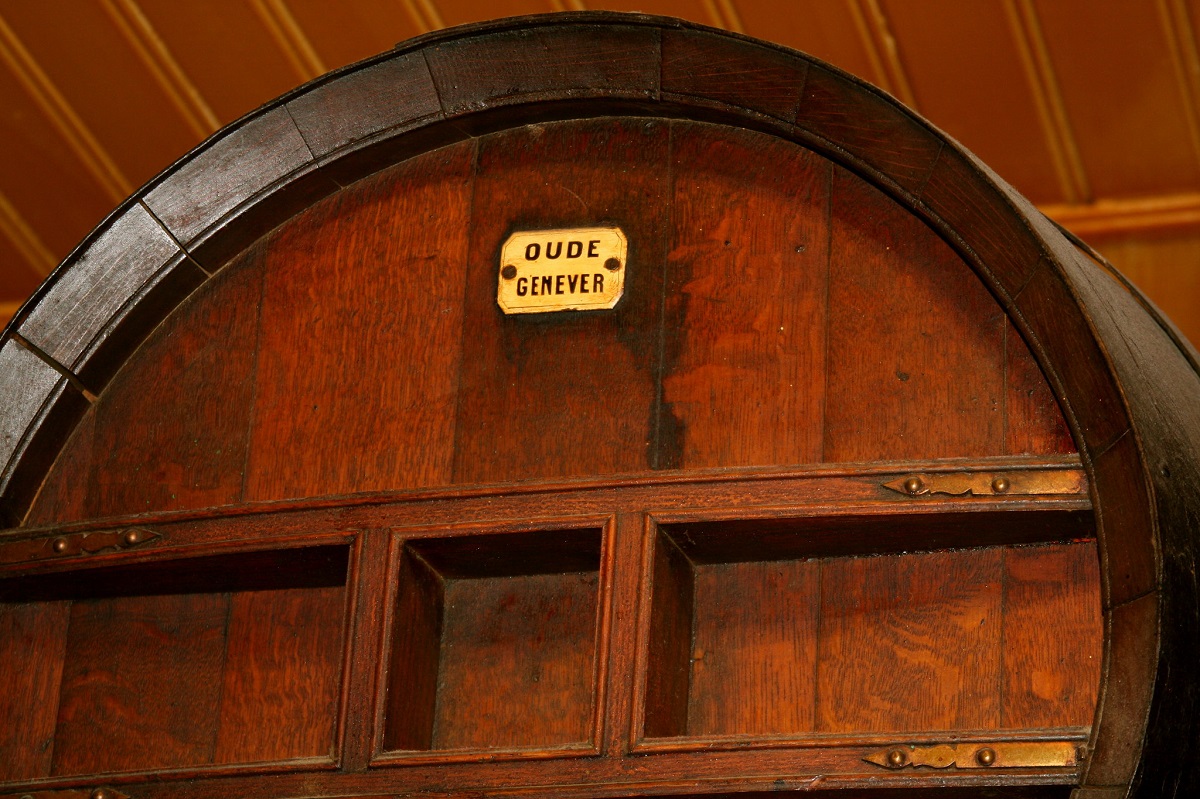
How to drink jenever
Straight-up
Which jenever you choose will of course come down to which style you prefer. But whatever your preferred tipple is, there are several ways you’ll see it served. If you drink your jenever straight up, it ought to come in a small, tulip-shaped glass, with no ice, filled right up to the rim. The first sip is traditionally taken hands-free, straight from the bar so as not to spill it. If this sounds strange, you’ll have to trust us and give it a try!
“Headbutt” or “submarine”
If you’ve had a particularly tough week, a kopstoot might be in order: literally translating as a “headbutt”, this boozy combination involves a glass of jenever with a beer as a chaser. If this doesn’t seem quite lethal enough, you can dip your jenever into the beer glass in the manner of a duikboot (submarine).
Jenever cocktails
If all that sounds a little… intense, don’t fret. Just like other spirits, jenever can be used in cocktails and mixed drinks, which might be more palatable to some tastes. Anywhere you’d expect gin, jenever makes a logical substitute: jenever & tonic? Yes please! Jonge jenever – with its dry-gin style – makes a fantastic Dutch Negroni or a Low Countries take on a Tom Collins. And let’s not forget that oude jenever’s flavor profile is closer to whisky, so it would make a very plausible Dutch Old Fashioned or a delicious mixed drink with ginger beer and lime.
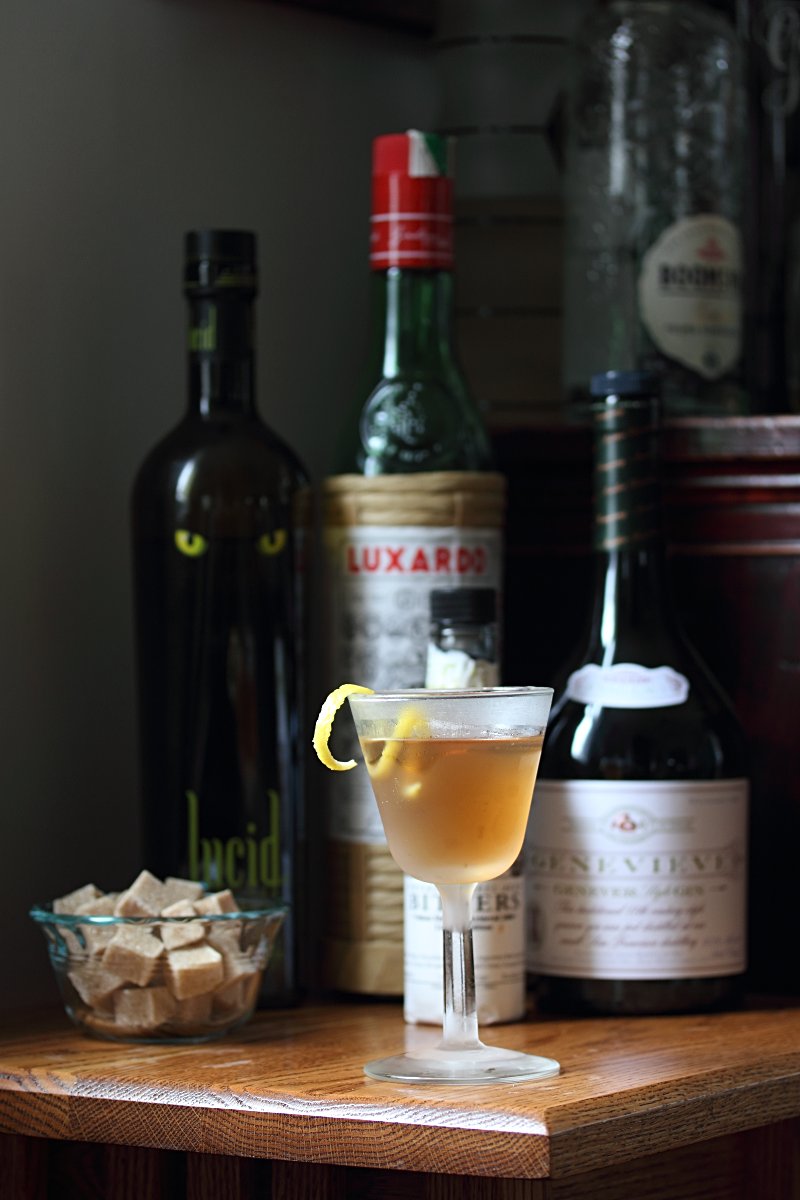
Insider’s Tip: Curious about other local drinks? Check out our guide on where to drink wine in Amsterdam, including wine made with Dutch grape varieties!
Where to taste jenever in Amsterdam
If all that’s made you thirsty, you’re probably going to want to try jenever for yourself. And while it’s rarely drunk while eating, jenever makes a fantastic pre-dinner aperitif or post-dinner digestif. Of course, most bars in Amsterdam will serve you a jenever if you ask for it, but there are some that specialize in Holland’s most historic liqueur.
Wynand Fockink
For the most traditional, old-school jenever experience, head to Wynand Fockink just off Dam Square – a jenever distillery and tasting room that dates back centuries. Yes, there will be tourists – but it’s still very popular with locals too, so you’ll be in good company while you sip your choice of tipple from the ancient wooden bar.
Proeflokaal A. van Wees
Similarly steeped in Dutch tradition is Proeflokaal A. van Wees in the Jordaan neighborhood, serving 17+ authentically distilled Amsterdam jenevers and 60 old-Dutch liqueurs. They also offer various jenever tastings, for those wanting to delve deeper into the history of Dutch spirits.
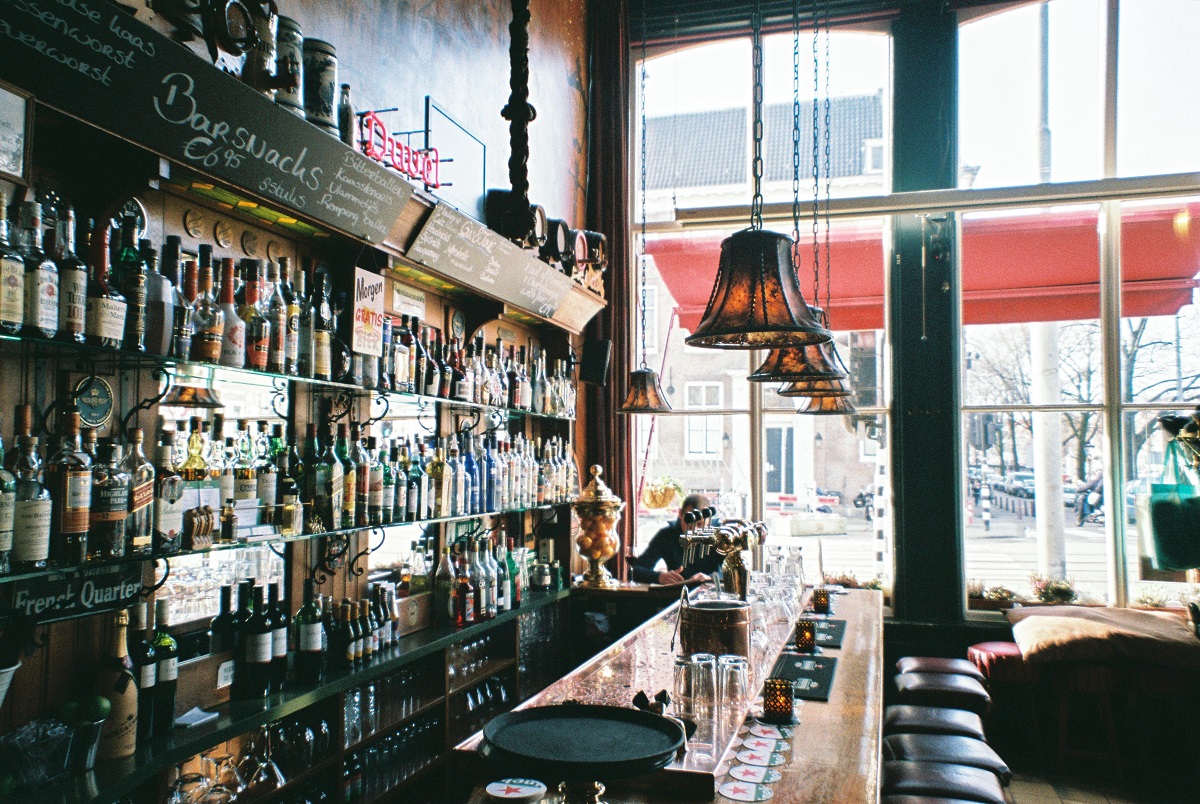
Flying Dutchmen
For something more modern, pop into Flying Dutchmen on the Singel canal – a bar that boasts over 800 unique spirits, including (naturally) jenever. Owned by award-winning mixologists Tess Posthumus and Timo Janse, you can be sure the team will have a great story to tell about every cocktail they mix for you.
Dutch Courage
The same duo behind Flying Dutchmen run Dutch Courage, a bar on the historic Zeedijk that features 150 different jenevers and a huge variety of jenever-based cocktails. Not to mention the world’s first kopstoot vending machine, which serves three types of jenever to go with a chilled beer.
Want to try delicious local bites and drinks with us? Join a local expert for delicious bites on our Ultimate Amsterdam Food & History Tour! The rich culinary culture of the Netherlands goes hand in hand with its history, as you’ll taste for yourself as you explore fantatic food stops in Amsterdam!
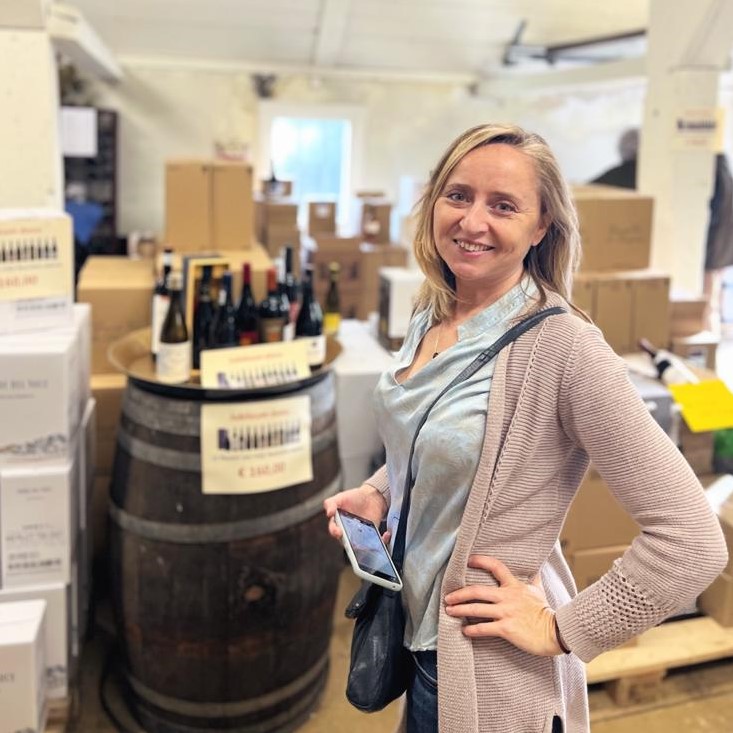
British by birth and Dutch by choice, Vicky Hampton is a food and wine writer who has lived and worked in Amsterdam since 2006 and been a digital nomad since 2021. She’s written for publications including The Guardian, New York Times and Michelin Guide, plus her own website, amsterdamfoodie.nl. Follow her on Instagram @amsterdamfoodie or @trufflesandtannins.